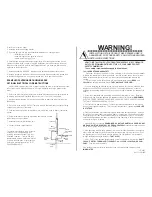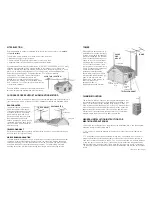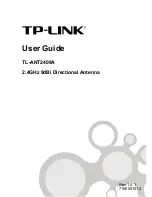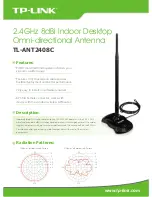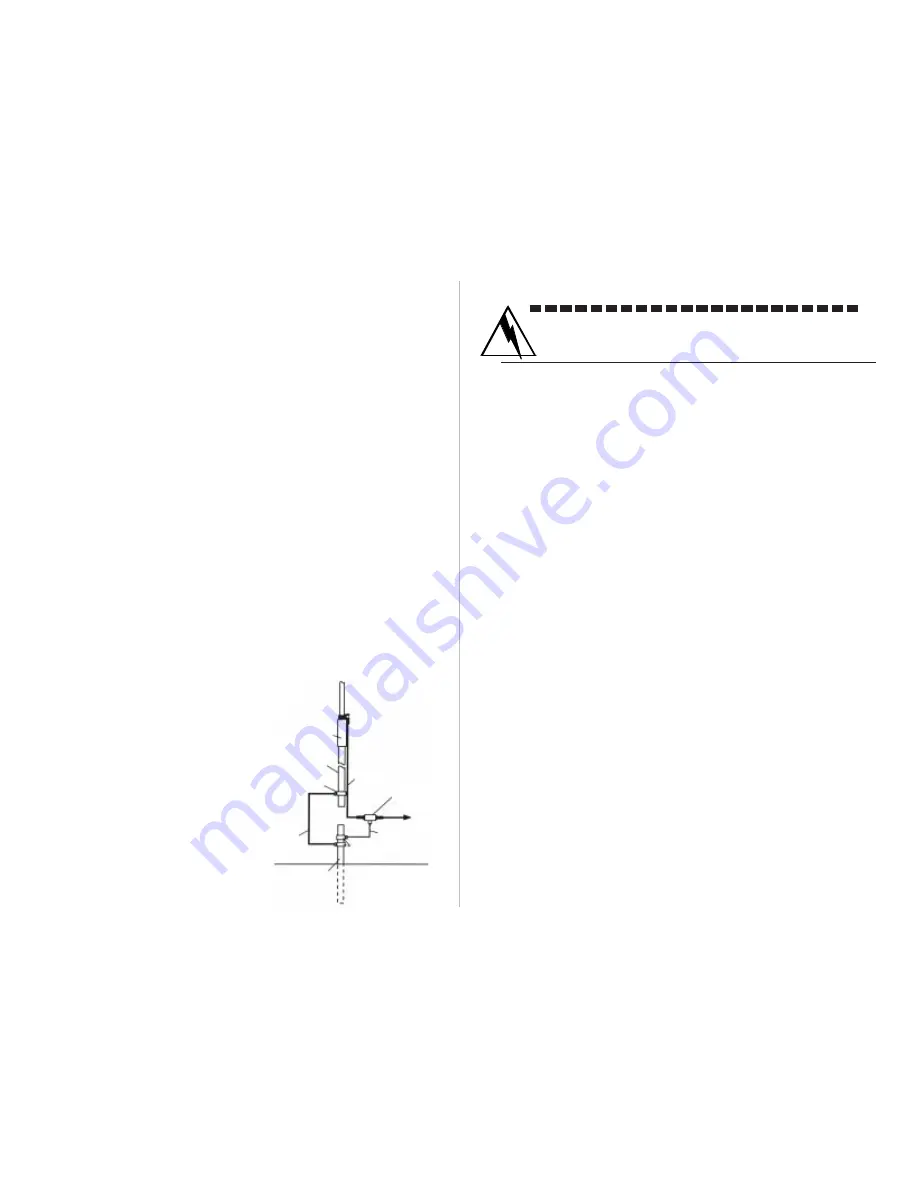
ANTENNA
MAST
GROUND
CLAMP
DOWNLEAD
STATIC
DISCHARGE
UNIT
TO SET
ANTENNA
GROUND
WIRE
MAST
GROUND
WIRE
GROUND
CLAMPS
GROUND
ROD
WARNING!
INSTALLATION OF THIS PRODUCT NEAR POWER LINES IS
DANGEROUS! FOR YOUR SAFETY, FOLLOW THE ENCLOSED
INSTALLATION DIRECTIONS.
HOW TO INSTALL YOUR OUTDOOR ANTENNA SAFELY IN ACCORDANCE
WITH THE RECOMMENDATIONS OF THE U.S. CONSUMER PRODUCT
SAFETY COMMISSION.
These safety recommendations apply to all antennas.
YOU, YOUR ANTENNA, AND SAFETY
Each year, hundreds of people are killed, mutilated, or receive severe and permanent
injuries when attempting to install an antenna. In many of these cases, the victim was
aware of the danger of electrocution, but did not take adequate steps to avoid the
hazard.
For your safety, and to help you achieve a good installation, please
READ
and
FOLLOW
the safety precautions below.
THEY MAY SAVE YOUR LIFE!
1. If you are installing an antenna for the first time, please, for your own safety as well
as others, seek PROFESSIONAL ASSISTANCE. Consult your dealer. He or she can
explain which mounting method to use for the size and type of antenna you are about to
install.
2. Select your installation site with safety, as well as performance, in mind. (Detailed
information in Site Selection appears in a separate section of this booklet.)
REMEMBER:
ELECTRIC POWER LINES AND PHONE LINES LOOK ALIKE. FOR YOUR SAFETY, ASSUME
THAT ANY OVERHEAD LINES CAN KILL YOU.
3. Call your electric power company. Tell them your plans and ask them to come take a
look at your proposed installation. This is a small inconvenience, considering
YOUR LIFE
IS AT STAKE.
4. Plan your installation procedure carefully and completely
before
you begin. Success-
ful raising of a mast or tower is largely a matter of coordination. Each person should be
assigned a specific task, and should know what to do and when to do it. One person
should be designated as the leader/coordinator of the operation to call out instructions
and watch for signs of trouble.
5. When installing your antenna,
REMEMBER: DO NOT USE A METAL LADDER. DO NOT
WORK ON A WET OR WINDY DAY. DO DRESS PROPERLY:
shoes with rubber soles and
heels, rubber gloves, long sleeved shirt or jacket.
6. If the assembly starts to drop, get away from it and let it fall. Remember, the antenna,
mast, cable and metal guy wires are all excellent conductors of electrical current. Even
the slightest touch of any of these parts to a power line completes an electrical path
through the antenna and the installer --
THATS YOU!
7. If ANY PART of the antenna system should come in contact with a power line,
DONT
TOUCH IT OR TRY TO REMOVE IT YOURSELF. CALL YOUR LOCAL POWER COM-
PANY.
They will remove it safely.
If an accident should occur with the power lines, call for qualified emergency help
IMMEDIATELY.
(Contd from previous page)
4. Install the selected mounting bracket.
5. If you are going to use guy wire installation instead of a mounting bracket:
install guy anchor bolts.
estimate length of the guy wire and cut.
attach a mast using guy ring.
6. Carefully take the antenna and mast assembly to the mounting bracket and insert it.
Tighten the clamp bolts. In case of a guyed installation, it will be necessary to have at
least a second person to hold the mast upright while the guy wires are attached and
tightened to the anchor bolts.
7. Install self-adhering DANGER label packed in antenna hardware kit at eye level.
8. Install a ground rod to drain off static electricity build-up and connect the ground wire
to the mast and ground rod. Use special ground rods, not a spare piece of pipe.
EXAMPLE OF ANTENNA GROUNDING AS PER
NATIONAL ELECTRICAL CODE INSTRUCTIONS
1. Use #10 AWG copper or #8 AWG or larger copper-clad steel or bronze wire as ground
wires for both the mast and the lead-in. Securely clamp the wire to the bottom of the
mast.
2. Secure the lead-in wire from antenna to antenna discharge unit and mast ground wire
to building with stand-off insulators spaced from 4ft (1.2m) to 6ft (1.8m) apart.
3. Mount antenna discharge unit as close as possible to where the lead-in wire enters
the building.
4. Drill a hole in the wall (CAREFUL! There are wires in that wall!) near your set just large
enough to permit entry of the cable.
5. Push the cable through the hole and form a rain drip loop close to where it enters the
house.
6. Put small amounts of caulking around the cable where it enters
the building to keep out drafts.
7. Install static electricity discharge unit.
8. Connect antenna cable to the set.
You should not attempt to raise a mast in
excess of 30ft in height/length (not
including the antenna proper) in a fully
extended condition. Thirty to fifty foot
tubular masts must be elevated, a section
at a time, with the base or outer section
secured in place with guy wires. GET
PROFESSIONAL HELP.
LP-9003
Rev. 16JUN1999

